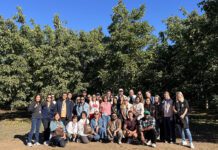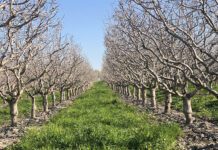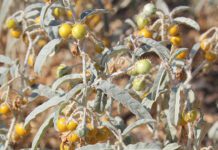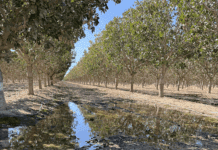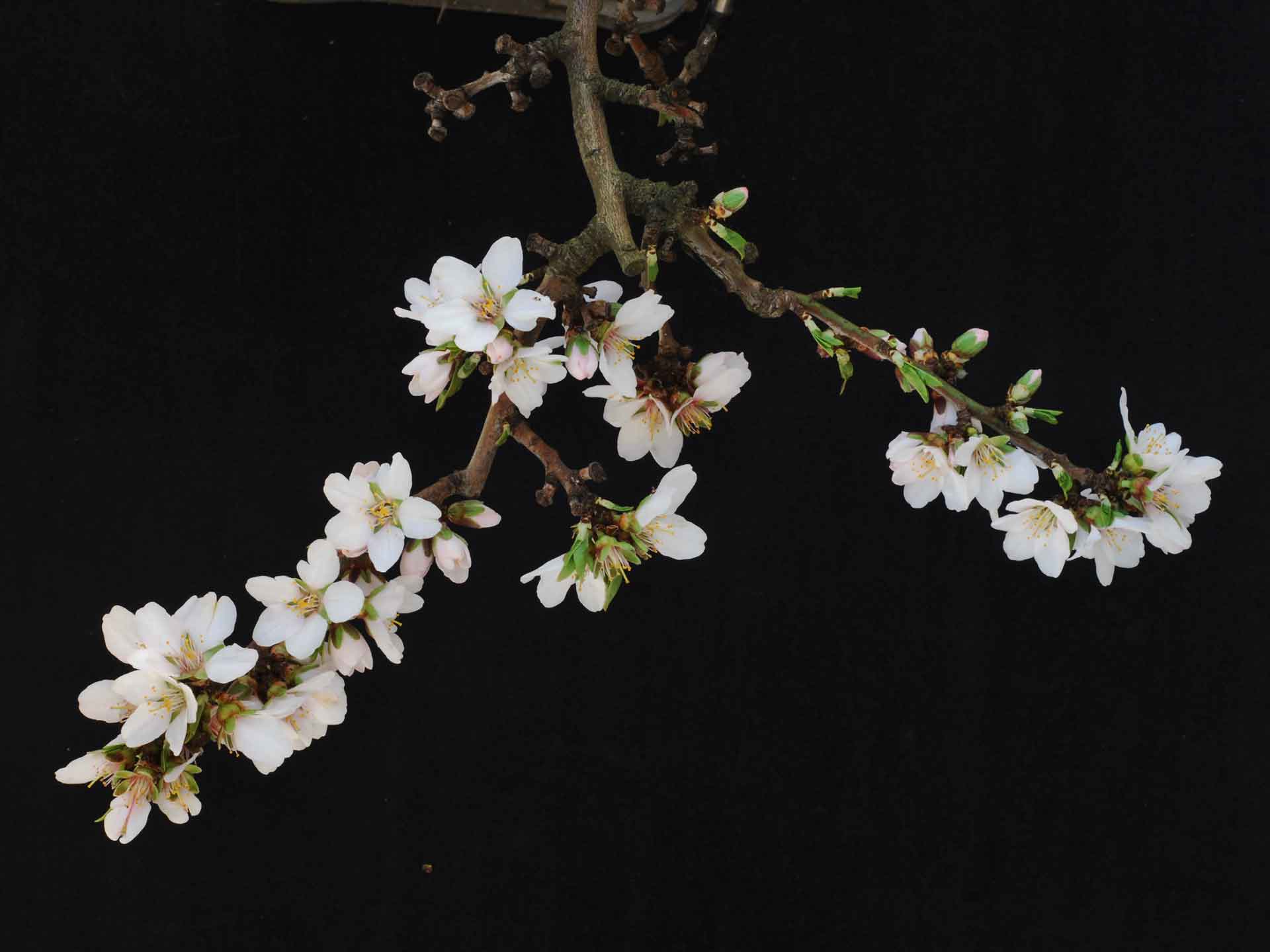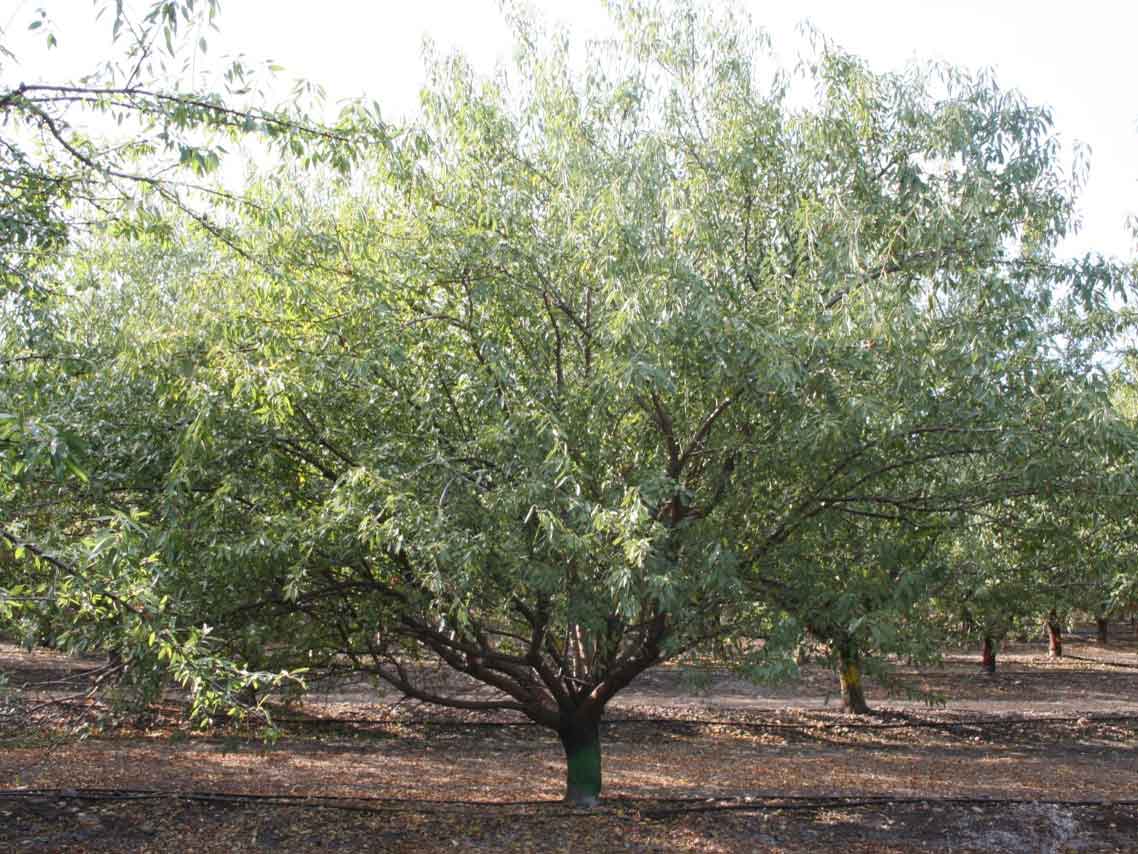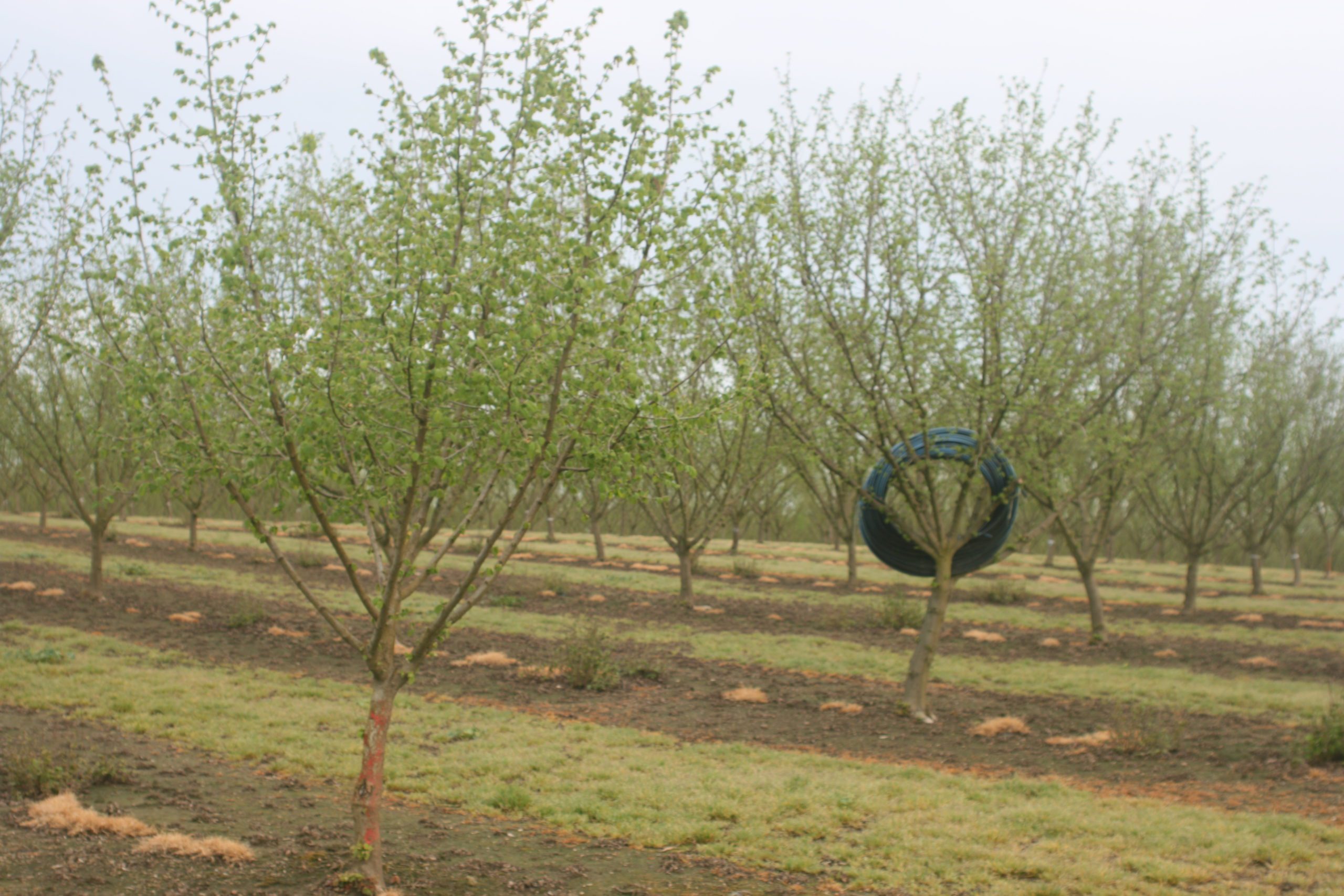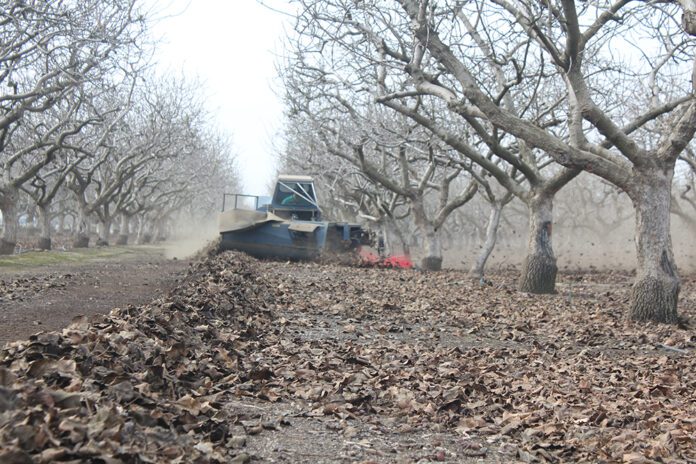
In a Nutshell: Listen to the Summary
Orchard sanitation may be the last thing on your mind in June as your pistachio trees develop full canopies and set fruit. But Joel Siegel, USDA-ARS researcher in Parlier, presented some important points for pistachio growers to ponder about orchard sanitation going into the growing season.
“There is a sanitation standard in place for almonds, but not for pistachios,” Siegel said. “Everywhere but Kern County the standard is two mummies per tree. In Kern County, where there is less moisture, the standard is one mummy per tree.”
He said almond mummies left on a tree after harvest are likely to contain a kernel and are a food source for navel orangeworm (NOW) larvae.
Siegel noted the difference in pistachios is that mummies in the tree may be nonsplits or blanks, which aren’t food sources. “The standard of less than two mummies per tree for almonds really doesn’t apply here,” he said.
It can be difficult to tell if a mummy on a pistachio tree presents a food source for NOW. One block of trees may have 20 mummies per tree, but they are mostly blanks. Another block with far fewer, but kernel-containing mummies, will have a higher level of NOW infestation.
That’s not to say that removing mummies from the trees isn’t important, it is just that not all pistachio mummies will be infested with NOW, the single most damaging insect pest in pistachio production.
Siegel asserted NOW survival in pistachio mummies on the tree is three times more likely than in mummies on the ground. Dormant shakes are certainly a way to remove most mummies, but if growers are spending money to prune trees, the crews can also remove a large number of mummies as they prune in December or January.
Siegel said research done by Kent Daane at UC Berkeley and UCCE specialist Houston Wilson has shown that once on the ground, and blown or swept to the drive rows with vegetation, mummies usually succumb to rot and are no longer a food source for NOW. Wilson is also conducting research on using sheep to eat the pistachio mummies dropped to the orchard floor. In a trial last year in Fresno County, he found the sheep would consume both new mummies and older mummies and reduced mummy densities on the orchard floor by about 25%.
As for crows eating the mummy nuts, Siegel said they generally ignore the nuts on the ground but seem to look for infested mummies in the trees.
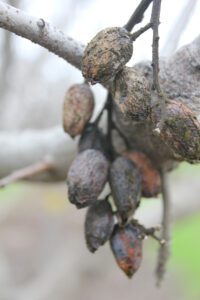
Mummies Roll
Once the pistachio mummies are off the tree, it also matters where they go. Left on the berm in dry conditions and without ground cover, mummies with kernels can still harbor NOW larvae. Pistachio mummies dropped on the berms should be removed by blowing or sweeping to the middles where they will deteriorate under a ground cover. This action can be difficult to achieve as the small mummies can become lodged in cracks in the soil, or trapped by irrigation lines. Siegel said trials have shown as few as 30% of mummies dropped on the berms are moved to the middles by blowing or sweeping.
While pruning presents a sort of “two-fer” for growers, mummy destruction can be hampered by the prunings that are piled in the drive row.
“The challenge in the pistachio industry is to find an effective and economic way to destroy mummy nuts,” Siegel said.
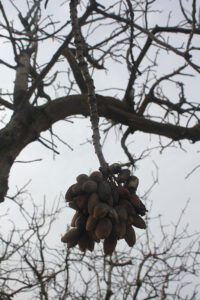
Sanitation Is the Most Important Practice
Joe Coelho, director of Sustainability and Member Outreach for American Pistachio Growers, spoke about how NOW control in almonds can affect pistachio orchards as harvest nears. Control begins with sanitation but determining bio fix can help with spray timing. Spring bio fix is determined by two successive upticks in trap catches and is used to time 1,050 degree days from flight one to flight two. The biofixes from two to three and three to four is about 750 degree days and the fourth one overlaps at 500 degree days.
It is the fourth flight of NOW and overlapping generation pressure when pistachio kernels are vulnerable. Coelho explained that the early NOW flights build higher populations if not controlled. The first three flights, he added, only directly affect almonds, but there may be some infestation of early or pea splits. Trapping is important in determining the third and fourth NOW flights, Coelho said.
Coelho said establishing bio fix, trapping and timely and effective hull split sprays in almonds can mean less NOW pressure in neighboring pistachio orchard at harvest.
“Our successes go hand-in-hand,” Coelho said.
Pistachio crop protection for NOW usually begins after some level of hull slip has occurred, Coelho said. With exponential hull degradation in Golden Hills, single-shake harvests are far more common than Kerman where the hull degradation follows a more linear pattern and generally less crop protection is needed. As the hulls degrade and slips from the shell, if split, the kernel becomes attractive and vulnerable to NOW infestation. The onset of slip usually occurs between flights three and four, but there may be some light activity, depending on a number of variables.
Coelho said to only count on two weeks of residual activity of any larvicidal materials and another may be needed to maintain protection up to harvest. A spray between shakes may also be necessary depending how much crop is left on the tree.
What we know about sanitation, Coelho said, is that it is the most important practice in controlling NOW. Some years, weather conditions prevent good orchard sanitation. The difference between almond and pistachio sanitation is that almond mummies can be harder to remove from trees, but are easier to destroy on the ground. In contrast, pistachio mummies are easier to shake from the trees, but are more difficult to destroy on the ground.
Coelho said growers should keep in mind the quality bonus from some processors begins at 0.25% insect damage. Not all processors have the same schedule. Even at a low damage percentage, with a 4,000 pound yield, the bonus loss is $200 per acre.

Cecilia Parsons
Cecilia Parsons has lived in the Central Valley community of Ducor since 1976, covering agriculture for numerous agricultural publications over the years. She has found and nurtured many wonderful and helpful contacts in the ag community, including the UCCE advisors, allowing for news coverage that focuses on the basics of food production.
She is always on the search for new ag topics that can help growers and processors in the San Joaquin Valley improve their bottom line.
In her free time, Cecilia rides her horse, Holly in ranch versatility shows and raises registered Shetland sheep which she exhibits at county and state fairs during the summer.






